Papua New Guinea Scuba Diving… There is some amazing diving in PNG, but it really is a large and diverse country. It is also spread out over a big area – so where to even start? In reality it would take several trips to experience all the best places! So, if you are going there for the first time it is best to concentrate on one of the main scuba diving locations.
Unless, of course, you have unlimited time and money… In which case you should probably do them all – diving PNG is addictive!
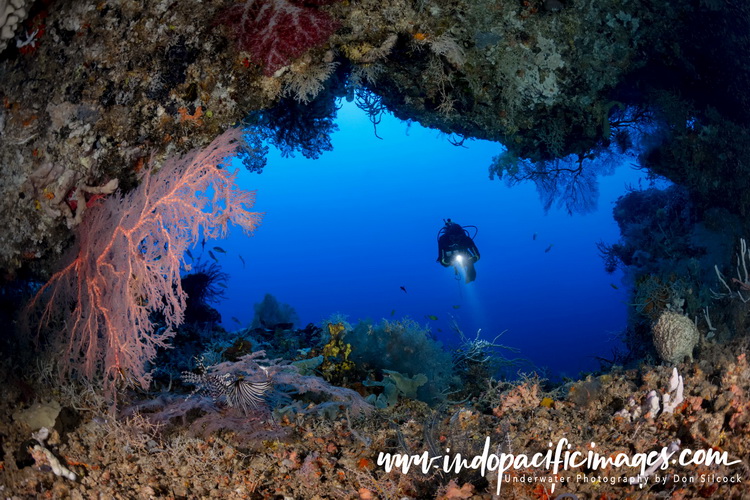
Papua New Guinea Scuba Diving – Quick Overview
The country of PNG consists of the eastern half of the island of New Guinea. Which is the second largest island in the world (with Indonesia’s West Papua occupying the other half). And then several large islands that make up the island provinces of the country.
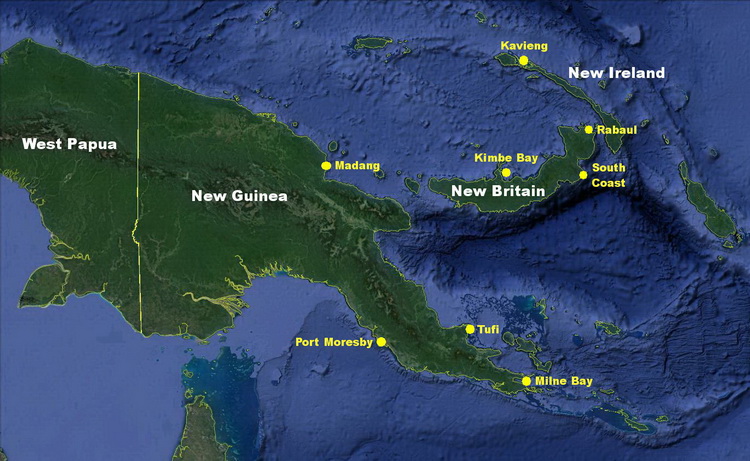
From an overall scuba diving perspective Papua New Guinea can be thought of as three primary areas. Starting with the main island of New Guinea and the well-known area of Milne Bay, centered around the town of Alotau on the eastern tip of the island. Milne Bay offers excellent diving and phenomenal biodiversity.
There is also surprisingly good diving near the capital Port Moresby on the south coast of New Guinea. Excellent diving at Tufi on the north-east coast. And finally there are some really nice sites around Madang, farther up in the north-west.
Secondly, going east into the island provinces, there is the large island of New Britain. The diving on the north coast is centered around Kimbe Bay. Plus Rabaul on the north-east tip of New Britain and then the remote south-east coast of the island.
Finally, there is the excellent diving around Kavieng. Located on the north-west tip of the chain of islands that make up New Ireland Province.
Papua New Guinea Scuba Diving – New Guinea Island
Milne Bay: I like to think of Milne Bay as the spiritual home of scuba diving in Papua New Guinea… As it is the place that really put the country on to the international diving map.
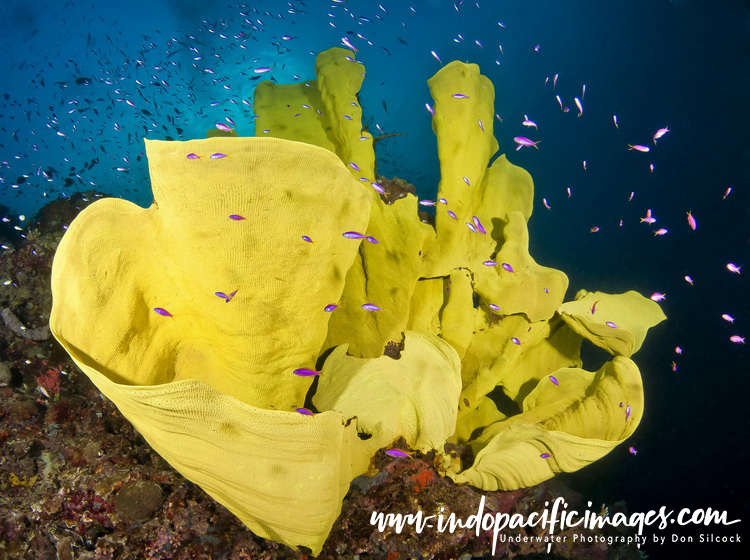
It was the exploits of the late Bob Halstead, together with his first wife Dinah, that first caught the attention of divers globally. The Halstead’s boat MV Telita was the first liveaboard used for scuba diving in Papua New Guinea. But other adventurers soon followed such as Rob van der Loos and his boat the MV Chertan and Craig de Wit on MV Golden Dawn.
Milne Bay has incredible biodiversity. With everything from the famous black sand critter site Dinah’s Beach at Lauadi up on the north coast of the bay. To the excellent manta ray cleaning station Giants@Home down in the southern China Straits.
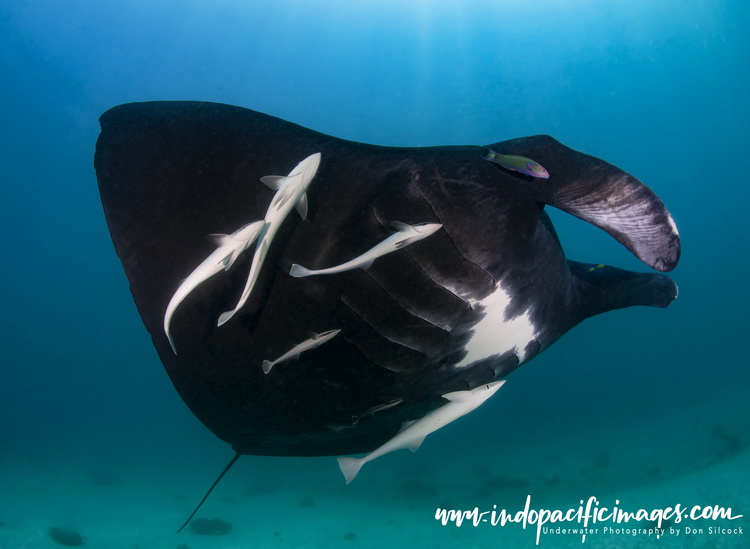
It is also sometimes possible to dive the incredible B17 Black Jack aircraft wreck from Milne Bay. Which really is one of the “must-do’s” of diving PNG.
There are two basic options for diving Milne Bay. You can either base yourself at Tawali Dive Resort on the north coast of the bay. Or you can do it by liveaboard, which will allow you to see a lot more of what the bay has to offer. Currently only one liveaboard, the MV Oceania operates in Milne Bay, but only in February and March.
Check out the Complete Guide to Diving Milne Bay to help you plan your trip to where scuba diving in Papua New Guinea began.
Port Moresby: The capital of Papua New Guinea suffers from a really bad reputation… So much so, that most diving tourists try to get through Moresby and on to their final destination as quickly as possible.
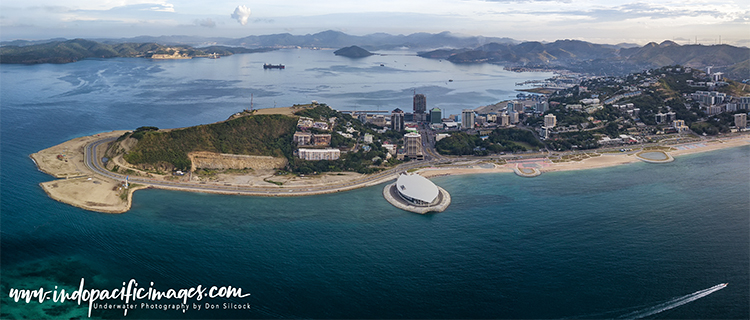
But get past that reputation and, contrary to what you might expect so close to a capital city, there is actually some very good scuba diving around Port Moresby.
The best dive sites are concentrated along the offshore and sunken barrier reefs. Several of which can be stunning in the right conditions.
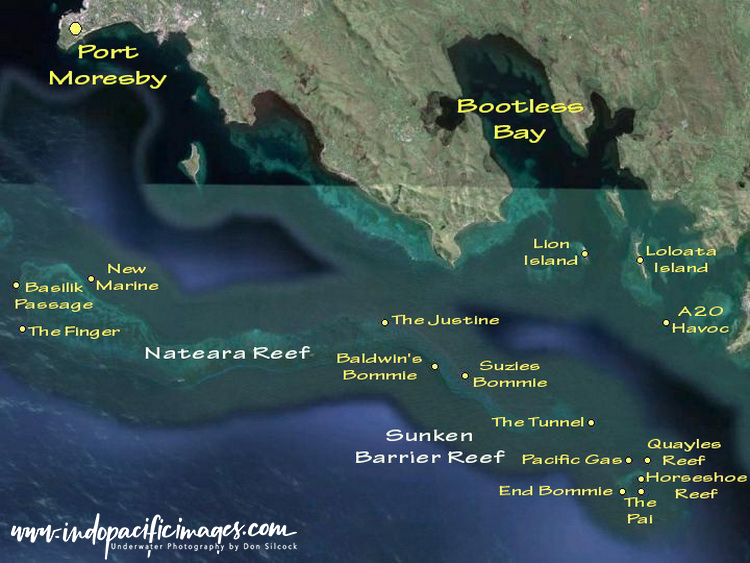
Until recently, there were two main options for diving Port Moresby. PRO Dive PNG (formerly known as the Dive Center) and Loloata Dive Resort in Bootless Bay. PRO Dive is run by long-time PNG resident John Miller who probably knows Port Moresby diving better than anybody.
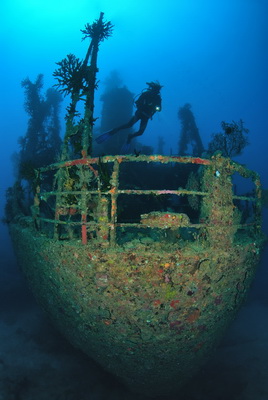 In late 2016 Loloata island was sold and closed for refurbishment. It recently opened again as Loloata Private Island Resort and is offering diving as part of its services.
In late 2016 Loloata island was sold and closed for refurbishment. It recently opened again as Loloata Private Island Resort and is offering diving as part of its services.
There are at least 15 dive sites on the offshore and sunken barrier reefs. Several of which offer everything from the elusive rhinopias to schooling barracuda. You could easily spend several days diving them.
But if you can only do a couple of sites make sure that one of them is the wreck of the Pacific Gas.
The wreck is one of the best dive sites in PNG and Suzies Bommie which simply teems with life!
Check out the Complete Guide to Diving Port Moresby for more information on the capital of Papua New Guinea.
Tufi: Located in the spectacular tropical fiords of Cape Nelson in Oro Province on the north-east coast of New Guinea. Tufi is without doubt one of the most scenic places in all of PNG. And is one of my very favorite locations for scuba diving in Papua New Guinea.
Physically isolated by the formidable Owen-Stanley mountain range. So Tufi is only accessible by plane or the long way around by ferry from Port Moresby – there are simply no roads…
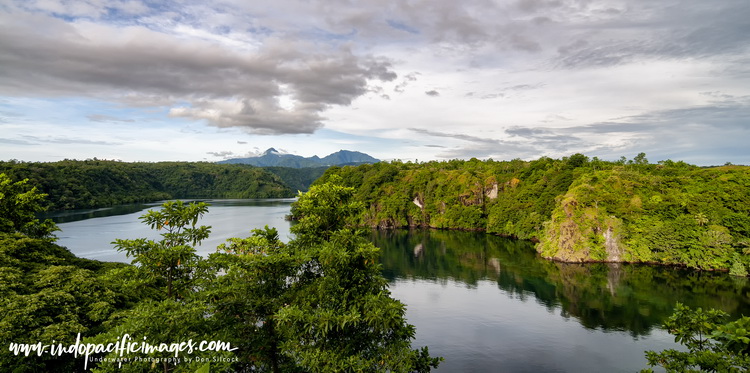
While some of the PNG liveaboards visit Tufi occasionally. There is really only one option for diving in this area – Tufi Dive Resort, which is located on the headland that overlooks the main fiord. While the dive shop and jetty are down in the fiord.
The diving comes in three flavors at Tufi. First of all there are a more than 25 excellent offshore reefs which are really only dived by visitors to the resort. Then there is some good critter hunting to be had right off the dive jetty in the main Tufi fiord. Finally the resort periodically dives the incredible B17 Black Jack aircraft wreck on as requested basis.
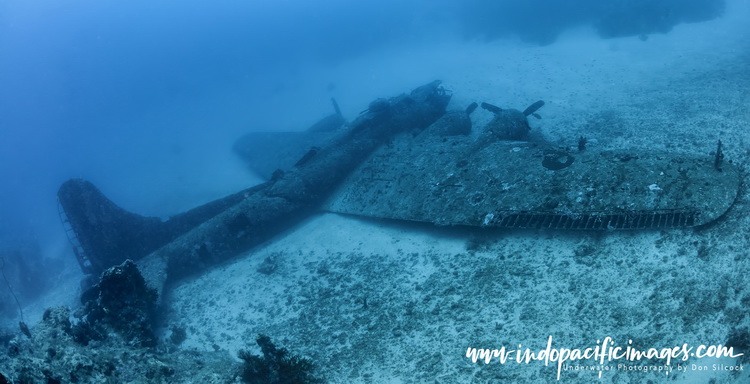
One of the reasons I like Tufi so much is that of all the main diving locations it is probably the best place to experience village life first-hand.
The resort has worked with several of the local villages to help them set up homestays. So you can spend a night or two staying with a local family. Which (in my opinion…) is the best way to begin understanding the fundamental culture of Papua New Guinea.
Check the Complete Guide to Diving Tufi to help you plan your trip to this very special, remote and incredibly beautiful part of PNG.
Papua New Guinea Scuba Diving – New Britain
Kimbe Bay: This large bay on the north coast is to New Britain what Milne Bay is to the main island of New Guinea. And offers a similar level of biodiversity with great dive sites and superb marine life.
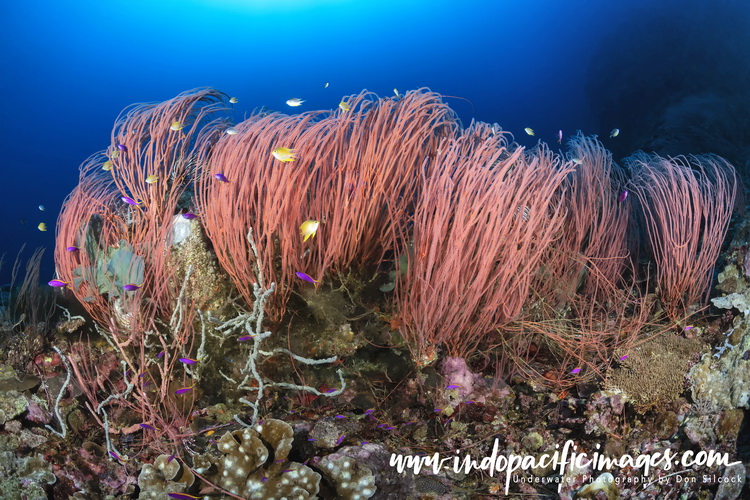
There are numerous excellent sites in Kimbe Bay itself. And then to the northwest are the remote Witu group of volcanic islands. With its unique Garove Harbour located inside the crater of an extinct and submerged volcano.
To the northeast of Kimbe Bay are the superb Fathers off-shore reefs, which are the sunken remains of a huge extinct volcanic caldera.
Kimbe Bay also a unique WWII aircraft wreck site with the beautifully preserved Mitsubishi Zero Wreck.
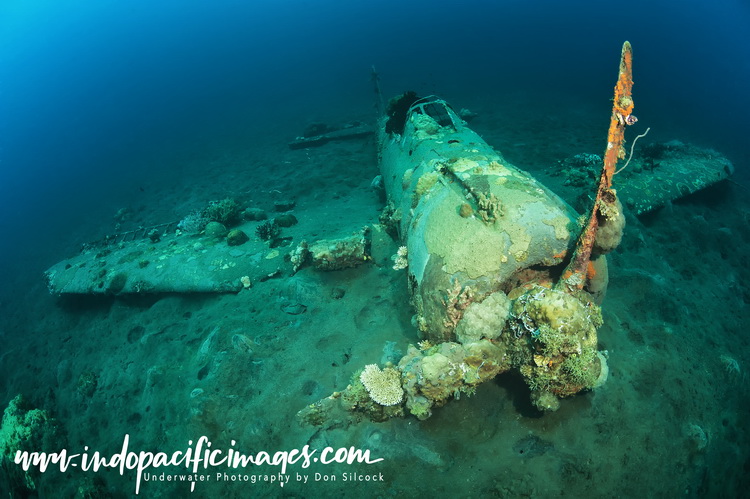
There are two options to dive the Kimbe Bay area – Walindi Plantation Resort is a long established and well-run operation that dives the sites in the bay itself using day-boats. Then there is the resort’s two liveaboards – the MV Febrina, and its legendary captain Alan Raabe who knows New Britain better than anybody.
Then there is the superb brand new MV Oceania… Skippered by Dan Johnson, who is also extremely knowledgeable about Kimbe Bay having run Walindi’s dive operation for 5 years with his wife Cat.
Check out the Complete Guide to Diving Kimbe Bay to understand more about this beautifully scenic and incredibly bio-diverse part of Papua New Guinea!
Rabaul: Located on the rim of a huge caldera that forms the superb natural anchorage of Simpson Harbor. It was that harbor combined with the town’s strategic location that made it a prime target during World War II. Rabaul was the second place captured by the Japanese in January 1942 when they invaded PNG.

Rabaul subsequently became the main army and navy base for the Imperial forces in PNG. But when the tide of war turned the Allied Forces counter-attacked. Simpson Harbor became the last resting place of an estimated 54 Japanese ships… Although only about 10 of them were accessible. Rabaul went on to become the wreck capital of scuba diving in Papua New Guinea!
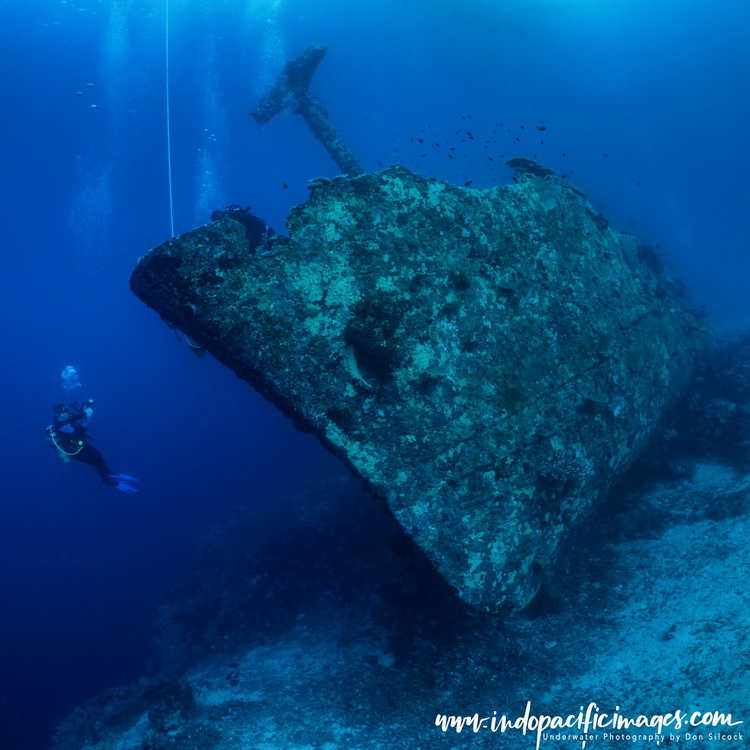 Until September 1994 that is, when two of the six large volcanoes around the rim of the caldera erupted. The eastern part of Rabaul was decimated and many of the best wrecks were smothered in grey volcanic ash. 26 years have passed since then and time has proving to be a great healer as several of the wrecks can now be dived again.
Until September 1994 that is, when two of the six large volcanoes around the rim of the caldera erupted. The eastern part of Rabaul was decimated and many of the best wrecks were smothered in grey volcanic ash. 26 years have passed since then and time has proving to be a great healer as several of the wrecks can now be dived again.
That wreck diving in and around Simpson Harbor, combined with the excellent Duke of York islands some 30km to the east, makes the Rabaul area prime diving real estate!
The area is dived by MV Febrina as part of its mid-year and south coast itineraries.
South Coast: The south-eastern half of New Britain is what you might call a remote location. There is only one logging road over the mountainous hinterland from the north coast of the island. There are no airports – so the only way to access the south coast is by boat.
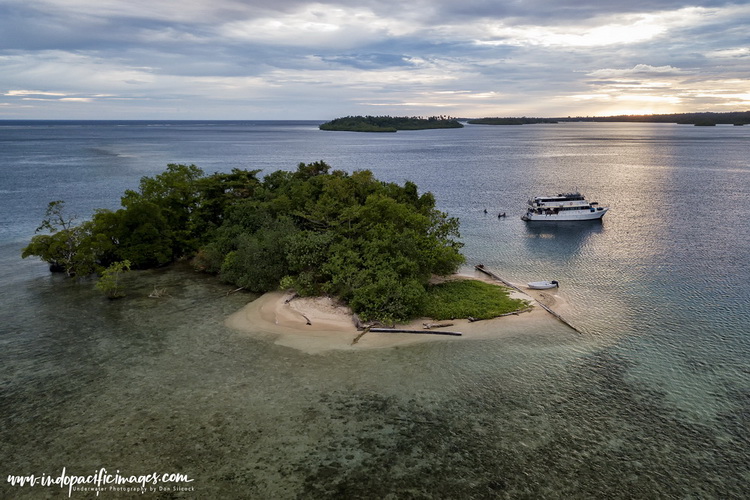
The mountain ranges isolate the north coast from the south and create the specific weather patterns of New Britain.
The south coast seasons are effectively opposite to the north. So when it’s the wet season in the north it’s the dry in the south… Underwater the area has a mixture of remote and untouched reefs, some excellent critter sites and a few WWII wrecks. But the MV Febrina is the only boat to visit the south coast on a regular basis and that is limited to the early months of each year.
You can use the following link to read more about about the remote south coast of New Britain. An area of scuba diving in Papua New Guinea that very few divers have experienced!
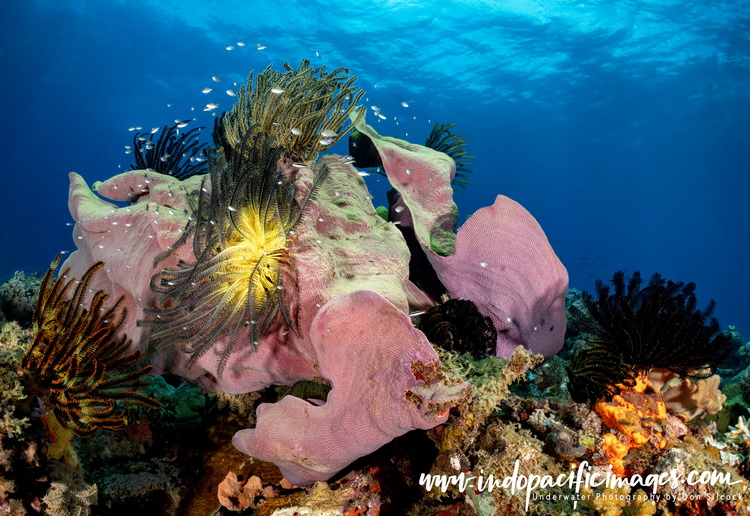
Papua New Guinea Scuba Diving – New Ireland
Geographically last (going west to east…), but by no means least is New Ireland Province. The long, musket shaped island lays at the far eastern end of the Bismarck Archipelago. And is famous for its unique Malagan carvings and traditional culture.
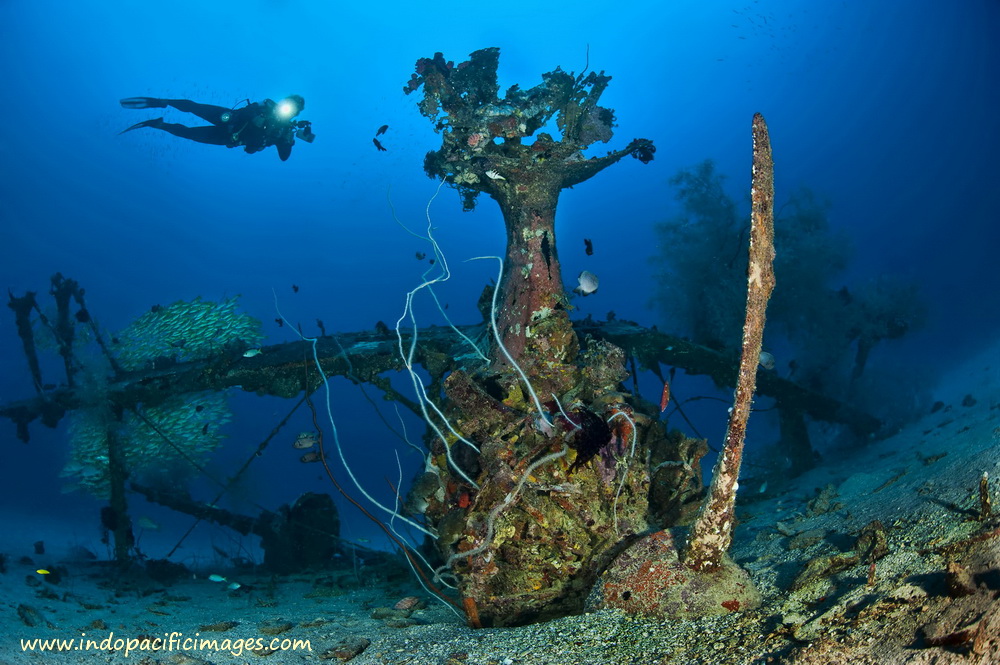
Divers know the area for its WWII wrecks, large pelagics and the big currents that sweep through its northern islands. While surfers travel to New Ireland between late October and April to enjoy the swells coming in from the north-west and north-east and the 4-6ft waves they produce.
The province consists of the large main island of New Ireland. Plus numerous other smaller islands, the largest of which is New Hanover.
The diving concentrated around Kavieng on the Pacific Ocean side of north New Ireland is mainly wreck diving. While over on the Bismarck Sea side it is mainly reef diving. New Hanover offers more Japanese WWII wrecks, including an extremely rare mini-submarine and some tremendous reefs. But the area is is remote and rarely dived so if you get the chance to go there – just do it!

There are two options for diving the Kavieng area. Lissenung Island Resort which is located on small but very nice island about 20 minutes by boat from Kavieng. And Scuba Ventures which is located in Kavieng itself.
Check out the Complete Guide to Diving New Ireland to help you plan your trip to this very pleasant, remote and quite special part of Papua New Guinea.
Back To: Guide to Scuba Diving in Papua New Guinea
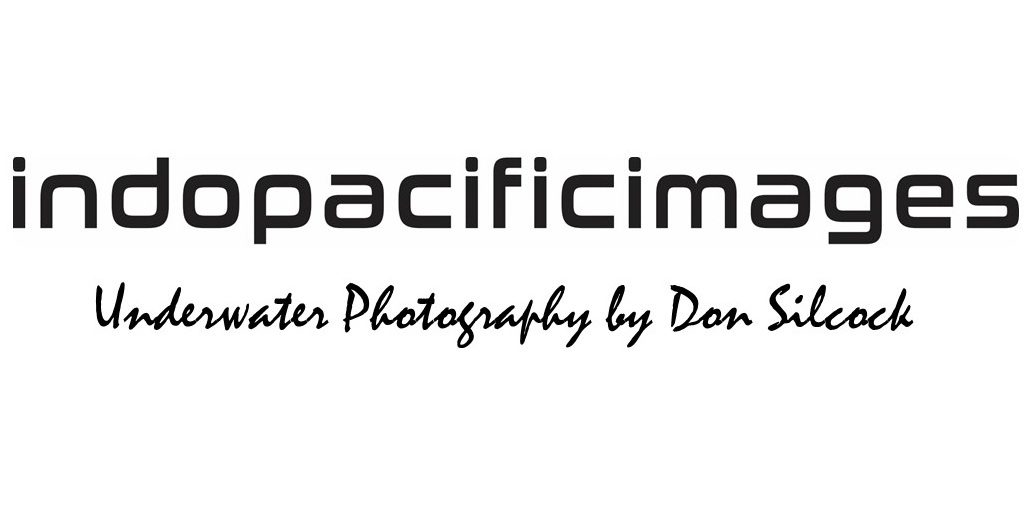
 The Complete Papua New Guinea Survival Guide
The Complete Papua New Guinea Survival Guide